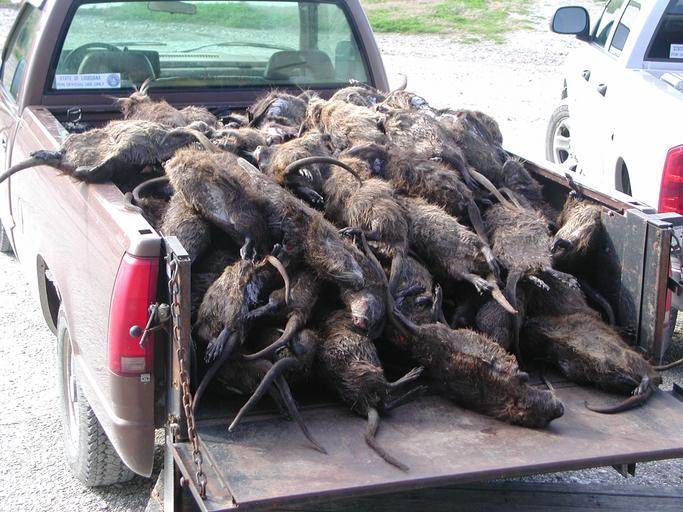MAKE A MEME
View Large Image

| View Original: | Nutriasicles.JPG (2048x1536) | |||
| Download: | Original | Medium | Small | Thumb |
| Courtesy of: | commons.wikimedia.org | More Like This | ||
| Keywords: Nutriasicles.JPG en These nutria a k a 'coypus'- <i>Myocastor coypus<i\> were killed as part of a population control program at Rockefeller Wildlife Management Area Louisiana USA They were stored in a freezer for later use in a research project Rockefeller WMA is located in Cameron Parish in western Louisiana on the Gulf of Mexico coast Rockefeller WMA has a variety of fresh intermediate and brackish marshes The management of water flows and salinity is an important tool in maintaining the diverse mixture of marsh for a variety of fish shrimp and waterfowl Nutria by their burrowing activities weaken or compromise the levees that are important in the refuge's water management effort When their populations are high enough nutria can also directly cause marsh loss however their populations rarely get that high at Rockefeller because of the high density of alligators <i>Alligator mississippiensis<i\> The nutria on the back of the pickup were a couple days take by refuge sharp shooters and had been in a freezer for couple months thus 'nutriasickels' I asked the refuge staff to hold onto the nutria so my graduate student Sara DeLozier could remove their eyeballs as part of a study whereby she characterized the population's age distribution by examining lens weight Nutria populations are generally managed by alligators and fur trappers but occasionally shooting becomes necessary when the nutria populations get too large or are too concentrated around the levee structures or marsh restoration sites Nutria have become an integral part of the biological community along coastal Louisiana and are an important food source for alligators U S Geological Survey Jacoby Carter text Sergio Merino photographer 2004-02-03 29°39'14 N 92°43'4 W PD-USGov Invasive animals 2004 in Louisiana Mammals of Louisiana Myocastor coypus as invasive pest Dead rodents Rockefeller Wildlife Management Area Biology research Rodent control | ||||